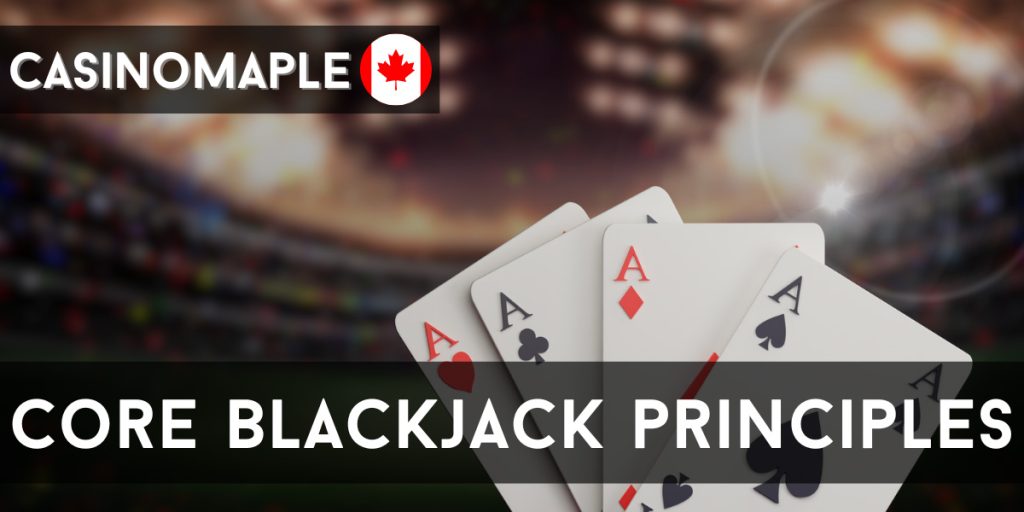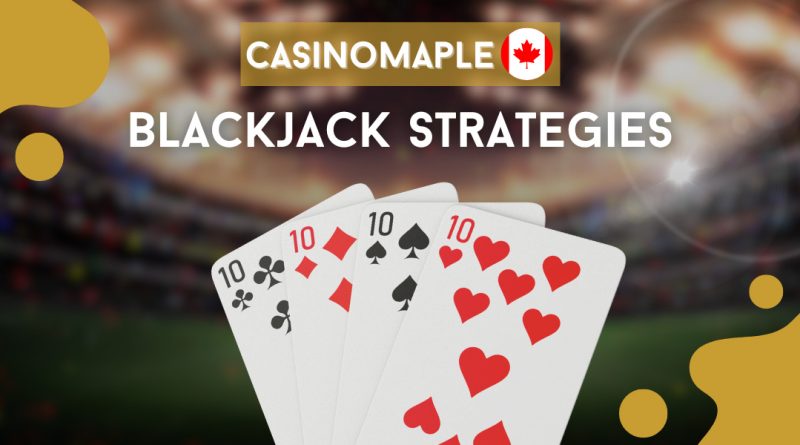Navigating Blackjack Strategies for Canadian Players
If you want to dive into the world of blackjack, knowing the fundamentals is key. With some essential strategy guidance, you’ll be able to play your hand wisely when those cards are dealt. We’ll explore tips on when to hit, stand, double down, and split. You’ll also learn about card counting, insurance bets, and other advanced moves. Our goal is to equip you with knowledge to make informed decisions at the blackjack table.
Whether you play at a land-based casino or online, blackjack offers excitement through its blend of luck and skill. With a reasonable house edge, you can stretch your bankroll further than other games if you use the right strategies. Stick to the guidelines here and you’ll have a fighting chance to beat the dealer. Soon you’ll progress from rookie status to a seasoned pro ready to win big. So let’s delve into how to play blackjack and make the odds work in your favor.
Core Blackjack Principles

When starting in blackjack, having a grasp of basic strategy is essential. This refers to the optimal decisions for each scenario based on your cards and the dealer’s upcard. By following basic blackjack tips, you can reduce the house edge and boost your chances of winning. Let’s go through some fundamentals:
- Always stand on 17 or higher. With a stiff hand, your risk of busting is too high.
- With 11 or less, hitting is favorable. Drawing another card presents more ways to improve your total.
- Blackjack’s basic strategy also dictates ideal times to double down, split pairs, and consider side bets. We’ll explore these advanced moves later.
- Deviate from basic strategy when card counting or in certain rule variations.
Optimal Times to Hit in Blackjack
Knowing when to request another card is critical in blackjack. While seasoned players rely a lot on instinct, there are tried-and-true guidelines for the hit strategy:
- With hard totals of 11 or less, always hit. The odds favor improving your hand over busting.
- Likewise, hit on soft totals of 18 or less. The presence of an ace gives you better bust insurance.
- If the dealer shows a 7, 8, 9, or 10, endure on 13 or higher. Their probability of beating you is low.
- Only hit on 13 or higher when the dealer reveals a 2 through 6 upcard. Here you risk losing by standing.
Knowing When to Stand Pat in Blackjack
While less thrilling than hitting, standing in blackjack is equally important. Holding your total against the dealer’s upcard seems counterintuitive when you’re far from 21. But a little restraint goes a long way! Before waving off that next card, assess this stand strategy wisdom:
| Total in Hand | Stand Against Dealer Upcard of: |
| Hard 17 or more | Always stand |
| Hard 13 to 16 | 7 or higher |
| Hard 12 or under | Do not stand |
| Soft 19 or more | Always stand |
| Soft 18 | 2 or higher |
| Soft 17 or less | Never stand |
Mastering the Double Down
While risky, doubling down in blackjack can pay off when used judiciously. By placing an additional wager up to your original bet, you receive just one more card to boost your hand. This aggressive approach works best when:
- You have a hard 9 or higher and the dealer shows a weak upcard (5 or less).
- Your hand totals 11 points. The odds of the next card giving you 21 are favorable.
- You have a soft 13, 14, 15 or 16. Doubling down acts as a buffer against the dealer’s potential strong hand.
Doubling down requires knowing when the odds tilt things in your favor. Never double a hard 12 or lower for instance. Also, avoid doubling soft 18 or higher totals. With flawless strategy and a little luck though, this bold maneuver can unlock game-changing payouts. Just save it for prime positions!
Strategic Pair Splitting in Blackjack
When dealt a pair in blackjack, you have the option to split into two separate hands. This allows you to double your bet and optimize both totals independently. Follow this guidance on the best times to capitalize on pairs:
| Pair Total | Favorable Dealer Upcard Range |
| Aces | Always split |
| 8s | Always split |
| 7s | 2-7 |
| 6s | 2-6 |
| 5s | 2-9 |
| 4s | 2-6 |
| 3s or lower | Do not split |
Avoid splitting higher mixed pairs like 10-K or 5-9 for example. The above values however give you the most latitude to improve at least one, if not both, hands. Just be wary of inflated losses from multiple doubled bets on busted hands! Otherwise, keeping pairs intact limits your upside.
The Lowdown on Insurance in Blackjack
Few side bets tempt blackjack players like insurance. When the dealer turns over an ace, you can hedge against their potential blackjack by wagering up to half your original bet. If the hole card gives them an instant win, your insurance payout mitigates losses on the main wager. But there’s a catch – the house edge on insurance ranges from 7-17%, making it an overwhelmingly bad bet long-term.
Here’s the reality – the chance of the dealer hitting blackjack with an ace showing is only 30-40%. Even when they do, accepting even money returns on just your original stake beats losing the insurance. Only card counters who know the outstanding ace proportion relative to other cards should consider this side bet. Otherwise, protect your bankroll and watch that second card fall!
Knowing When to Wave the White Flag
Few gambles sting like surrendering your blackjack hand. But in select scenarios, this strategic retreat saves you from hemorrhaging more money on a likely loser. Consider bowing out when:
- You hold a hard 15 or 16 and the dealer shows a face card or ace. Their odds of beating you are nearly 50/50. Forfeiting half your wager is favorable.
- You are stuck with a hard 12-14 against the dealer’s strong 9, 10, or ace. Even if you hit without busting, they are still favored to win.
- You have a poor multi-card hard hand totaling 15-16 or a very flawed soft hand. Drawing is too risky.
Grasping the Basics of Card Counting
While not for all players, card counting can shift the odds decidedly in your favor at blackjack. Tracking the ratio of high to low cards already dealt, you can vary bets and strategy accordingly. Here are the fundamentals to know:
- Use a simple Plus/Minus system to tally cards. As tens, jacks, and other face cards emerge, the remaining deck becomes more favorable.
- With the true count positive, bet more aggressively. The concentration of non-tens increases your chances of hitting without busting.
- Negative counts signal more conservative play. Here, hitting becomes riskier with excess tens and aces still in the deck.
- Avoid detection by keeping count casually and varying wagers gradually. Never wildly spike/drop bets.
If card counting intrigues you, learn the proper form with practice drills first. Though mathematically sound, success still requires skill. When ready, utilize your newly acquired skills in card counting to gain financial benefits! Just avoid unwanted casino scrutiny.
Playing Blackjack Online in Canada
With online casinos, Canadian blackjack fans can enjoy the game from anywhere without traveling. Major sites offer diverse variants, stakes, and features. Assess top real money online options with this overview:
| Site | Key Features |
| JackpotCity | $1600 welcome bonus, great on mobile |
| Spin Casino | Fast withdrawals, high RTP |
| Ruby Fortune | Slick live dealer blackjack interface |
Avoiding Common Blackjack Blunders
When tensions run high in blackjack, players often make regretful choices. Sidestep these frequent missteps:
- Taking insurance when not card counting. This risky side bet is overwhelmingly not worth it.
- Splitting 10-point pairs. Keep 20 points intact rather than risk busting for marginal gain.
- Chasing losses by upping stakes randomly. Stick to a preset bankroll strategy.
- Doubling soft hands under 18. With an ace already ensuring 12+ points, hitting is safer.
- Standing on weak 12-16 totals against strong dealer cards. At least take a hit to try to improve.
Additional Blackjack Pro Tips
Once you master fundamentals, consider these advanced blackjack strategies:
- Learn the proper form on side bets like Perfect Pairs. While still risky, their unique rules can bring big rewards.
- Study differences in variants like Spanish 21. Tailor basic strategy to their altered mechanics.
- Brush up on your math skills. Fluency with fractions and probability translates well to gameplay decisions.
- Scout tables first to pinpoint generous rules and dealer tendencies. This grants a subtle but useful edge.
- Consider team play. Coordinated card counting and betting across players boost potential profits.
Key Canadian Blackjack Variants
Beyond classic blackjack, Canada hosts unique regional spins:
| Variant | How it Differs |
| Atlantic City Blackjack | Dealer stands on soft 17 and can double down on any cards |
| Vegas Strip Blackjack | Four decks with favorable double/split rules |
| European Blackjack | The player can only double 9-11, dealer doesn’t peek for blackjack |
Closing Thoughts
Whether playing blackjack socially or pursuing major wins, sound strategy gives you an edge. Keep these guidelines handy as a decision framework. With practice, things like standing on strong hands become second nature. Before long, you’ll be a researcher blackjack player prepared to beat the odds.
For those inspired to keep improving, check out these additional blackjack resources:
- Wizard of Odds strategy charts by game variant
- Getting Started in Card Counting tutorial
- Top tips for online blackjack
Remember – stay calm, play with discipline, and frequently reassess your practice. Learning blackjack is a continuous process. But armed with the fundamentals, your skill and consistency will grow exponentially. And who knows – maybe lady luck even lends a hand! Thanks for reading and enjoy the tables.
More at : casinomaple

